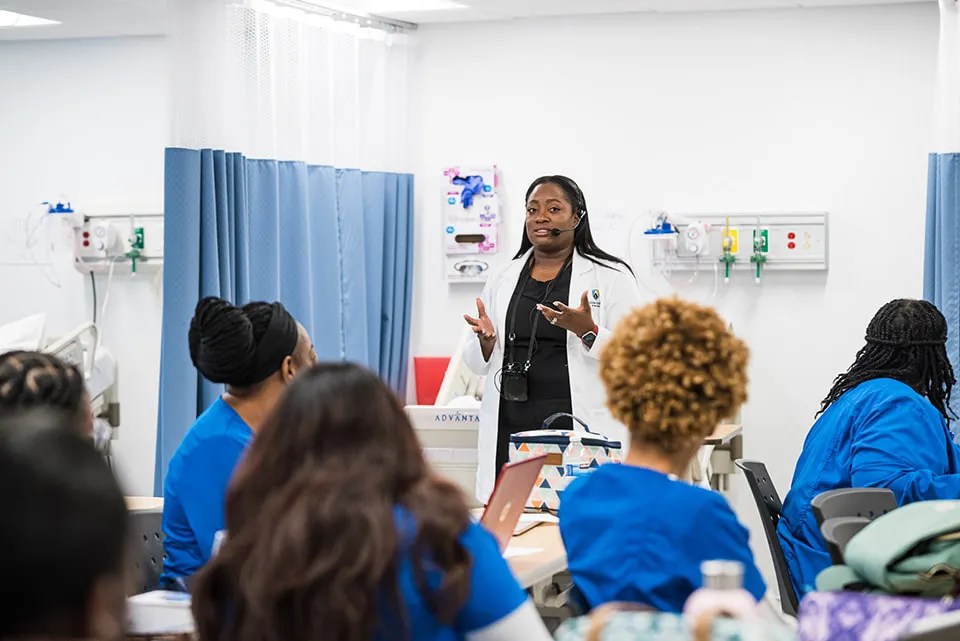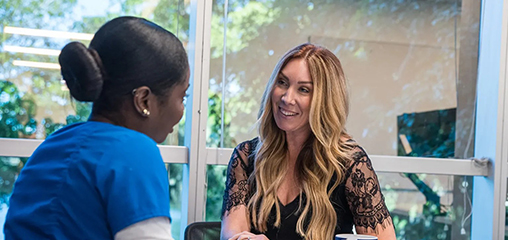
Herald/Review Media, Published May 5, 2024
By Mark Hays
Experts may debate on how to solve it, but one thing is clear: Arizona has a nursing shortage. Dr. Amber Kool, DNP, RN Associate Provost, Arizona College of Nursing explained some causes and possible solutions to this crisis.
Kool noted that a shortage of nurses has been known as an issue since before COVID-19, and has only worsened in the following years.
“We have known for years that we were coming into a nursing shortage,” she said. “And now in Arizona specifically, we are projected to need about 30,000 nurses by 2025…So we’re going to be short pretty significantly in the next year-to-18 months that we would anticipate.”
This nurse shortage, Kool said, disproportionately affects rural communities in the state, where nurses may take on heavier and more varied workloads.

Dr. Amber Kool, DNP, RN
“I would definitely say rural areas have a harder time attracting nurses and keeping nurses in that environment,” she said. “I think that they probably have a harder workforce…. they’re caring for a lot of their different clients. I also think that one of the strengths of a generalist nurse is that they can care. They can care for a lot of different types of clients in those rural areas.”
Rural health care providers haven’t always been able to compete with the salaries and benefits that urban hospitals provide.
“In urban areas, there’s a draw,” Kool said. “tTere’s big hospitals, there’s a lot of resources… there’s a lot of benefits,”
In Cochise County, however, local educators say that hospitals have begun increasing pay to compete with urban centers.
A primary issue that this nursing shortage could cause is increased patient ratios. Kool said that a ratio of one nurse for every four to six patients, or one nurse for every patient or two in an emergency room setting is ideal. When the ratio is stretched, the risk of poor quality care can become a real issue that can even result in dangers to patients.
“First and foremost, the more patients that you have the increased risk of missing something, not catching, maybe, that small assessment finding that makes the difference between one plan of care versus another,” explained Kool. “It means not maybe getting to have the longer conversations or sitting at that bedside with the family when they really need to understand a treatment plan a little bit better.”
 Burnout is another consequence that can arise when nurses are caring for an unrealistic number of patients.
Burnout is another consequence that can arise when nurses are caring for an unrealistic number of patients.
“Nursing is perceived as different than medical care, in that there is a significant focus on… what we call the art of nursing, and that really encompasses holistic caring for patients,” Kool said. “You know, sitting at that bedside, taking the time to understand who our patients are, looking at things like psychosocial issues, looking at emotional support needs, looking at family support needs… (things) beyond just assessing and intervening on a patient’s behalf.”
Kool examined some factors for why medical centers can’t find enough nurses, noting that attracting new candidates doesn’t appear to be the primary issue.
“There are still a lot of people that want to be a nurse, there is still a call for individuals to move into the profession,” she said. “Can we get them through programs fast enough to backfill the nurses that are leaving?”
Most of the nurses who are leaving, Kool said, are either aging into retirement or advancing to higher level medical positions.
“It’s not always because people don’t want to be a nurse anymore,” said Kool. “Nurse Practitioners is an exponentially growing field.”
Kool cited herself as an example of this growing trend of bedside nurses moving into higher careers
As to how the profession can attract qualified applicants to fill the roles left behind by those who retire or move up, Kool stressed the role of educators is to help create the right mindset for the prospective nurses who pass through their classes.
When someone feels a drive to be a nurse, giving them the proper support can be the secret to transitioning that interest into a nursing career.
“And then I think it just becomes kind of a full circle snowball event,” she said. “There becomes a positive messaging. I do think that there’s an opportunity for nurses themselves to really talk about what it means from a good place. I think that healthcare in general has a tendency to talk about the bad, but there’s nothing I love more than hearing about the wins. And I think the more that we talk as nurses about the wins, you will draw more people into this profession that genuinely care and want to take care of the community that they serve.”
This effort to create an environment of support extends to things like stress reduction practices in nursing education.
“I’ve seen classes where faculty take a moment to do meditation before an exam, or take a moment between lectures to do yoga exercises,” said Kool. “So really trying to role model how to protect yourself as a nurse and how to help support one another. I think that from a health care and supporting effort, we have an opportunity to build a little bit more of that into both sides of the house and learn how to support one another so that we can influence the shortage.”
Start Your Future in Nursing Today

If you’re considering a career as a registered nurse (RN), Arizona College of Nursing is here to help you pursue your dream. Our BSN program enables you to earn a Bachelor of Science in Nursing in just 3 years or less with qualifying transfer credits. We’ve helped hundreds of students to earn a BSN degree and enter the nursing profession – and we’re ready to support you on your path to becoming an RN.
Why Choose Arizona College of Nursing?
- Earn a BSN degree in 3 years or less with eligible transfer credits
- Campus locations throughout the US
- Night classes for general education courses
- Hybrid Online/In-Person format for general education classes
- Nursing education is all we do
- CCNE-Accredited Program*
- NCLEX-RN success coaches and exam preparation class
- Financial aid available to those who qualify
Discover Your Path to a Career in Nursing
Information in this post is accurate as of May 15, 2024.
*The Bachelor of Science in Nursing (BSN) degree program at Arizona College of Nursing is accredited by the Commission on Collegiate Nursing Education (https://www.aacnnursing.org/). All Arizona College of Nursing and Arizona College campuses are institutionally accredited by the Accrediting Bureau of Health Education Schools (https://www.abhes.org/), a U.S. Department of Education-recognized accrediting agency.








